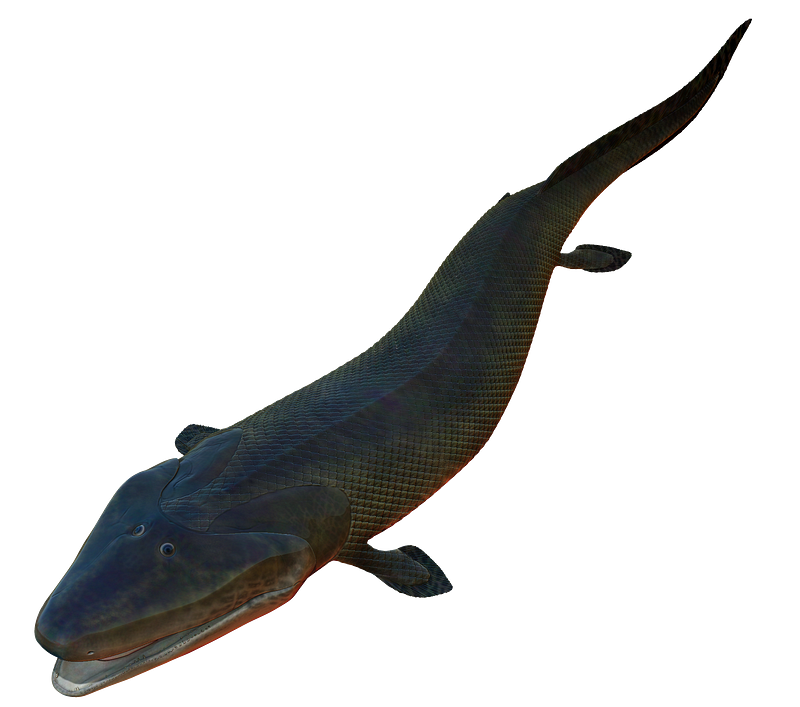An In-Depth Look at Tiktaalik: Bridging Evolution and Creationism
Written on
Chapter 1: The Fascinating Story of Tiktaalik
The tale of Tiktaalik is captivating, as it represents a crucial link between aquatic and terrestrial life. Here’s an overview of its remarkable journey:

Discovery: Unearthed in 2004 by paleontologists in Canada’s Arctic, Tiktaalik fossils date back approximately 375 million years.
Fishapod: This creature is neither a complete fish nor fully adapted for life on land. It exhibits features typical of both: fish-like scales and fins combined with a flat head and robust neck, earning it the nickname “fishapod.”
Significance: Tiktaalik plays a pivotal role in the evolutionary narrative, acting as an essential piece in understanding the transition from fish to the first four-legged animals.
Anatomical Insights: Its structure suggests it may have spent time on land, possibly using its fin-like limbs in shallow waters, hinting at the early stages of terrestrial adaptation.
Finding Tiktaalik was a significant milestone, shedding light on a transformative period in the history of life.
Section 1.1: Predicting the Discovery
The quest for Tiktaalik involved both intuition and rigorous scientific research.
Key Players: The discovery is attributed to a dedicated team, led by paleontologists Edward B. Daeschler, Neil H. Shubin, and Farish A. Jenkins Jr.
The Predictive Vision: Notably, Neil Shubin had long speculated about the existence of a creature that would fill this evolutionary gap. His foresight led to a five-year exploration of Ellesmere Island, targeting geological formations that could harbor such fossils.
Successful Outcome: Their efforts culminated in the discovery of Tiktaalik, which validated Shubin's predictions about evolutionary transitions.

Section 1.2: Evidence Supporting Evolution
Tiktaalik serves as a compelling example of how evolutionary theory can generate testable predictions.
Traits Expected: Based on evolutionary principles, Shubin anticipated a creature exhibiting a blend of aquatic and terrestrial characteristics, which Tiktaalik indeed presented.
Fossil Confirmation: The fossils revealed the predicted traits, lending strong support to the theory of evolution. This discovery fills a crucial gap in the fossil record, showcasing a gradual transition rather than abrupt changes.
Scientific Process: Tiktaalik’s existence illustrates how scientific inquiry utilizes established theories to direct research and subsequently verifies these predictions through empirical evidence.
Chapter 2: The Challenge to Creationism
The first video titled "A Scientist Examines 3 BIBLE Prophecies That Came True (Mind Blowing!)" delves into prophetic insights, providing a fascinating perspective on the intersection of science and belief.
Tiktaalik's discovery raises important questions about creationist perspectives on species origin.
Creationist Beliefs: Typically, creationism asserts that God created each kind of living organism in its current form, allowing reproduction only within the same kind.
Tiktaalik’s Implications: The anatomical features of Tiktaalik illustrate a transitional form, suggesting evolutionary processes rather than fixed kinds.
Gradual Development: The presence of Tiktaalik implies that new species emerged from incremental changes in existing forms, countering the notion of instantaneous creation.
The second video titled "Jonathan Cahn's Earth Shaking 2024 Prophecy!" examines predictions within a biblical context, further complicating the dialogue between faith and scientific understanding.
While Tiktaalik challenges creationist views, it does not entirely disprove them.
The Nature of Scientific Theories: Unlike absolute statements in mathematics, scientific theories are adaptable. They are grounded in observable data and can be refined as new evidence emerges.
Creationism vs. Evolution: Creationist interpretations might view Tiktaalik as a variation within the "fish kind," seeking explanations that align with their beliefs.
Conclusion: Tiktaalik represents a formidable challenge to creationist doctrines, yet it may not completely dismantle them for steadfast believers. From a scientific standpoint, however, it significantly bolsters the argument for evolutionary theory.
In conclusion, the discovery of Tiktaalik is a remarkable testament to the power of scientific inquiry, illustrating how predictions based on evolutionary theory can lead to significant findings. Thank you for engaging with this exploration of a pivotal moment in the evolutionary narrative.